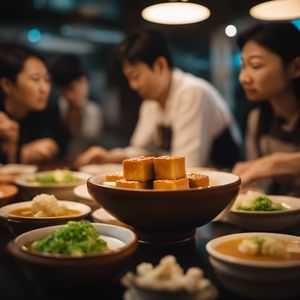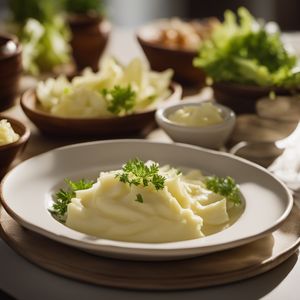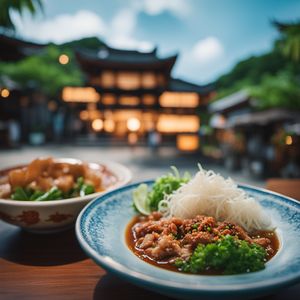
Dish
Nasu dengaku
Miso-glazed Eggplant
Nasu dengaku is made by slicing eggplant in half and grilling it until it is tender and slightly charred. The miso glaze is made by mixing together miso paste, sugar, mirin, and sake. The glaze is then spread over the eggplant and broiled until it is caramelized and crispy. The result is a sweet and savory dish with a crispy exterior and a soft and creamy interior.
Origins and history
Nasu dengaku has been a popular dish in Japan for centuries and is often served at festivals and special occasions. It is said to have originated in the Edo period (1603-1868) and was originally made with tofu instead of eggplant. The dish became popular in the 18th century when miso paste became more widely available.
Dietary considerations
Suitable diet types: Vegetarian, Vegan (by using a vegan miso paste), Gluten-free. Allergens: None. Suggestions: Omit nuts in the garnish to make it nut-free.
Variations
Some popular variations of nasu dengaku include using different types of miso paste or adding other ingredients to the glaze such as ginger or garlic. Some recipes also call for topping the dish with sesame seeds or chopped scallions.
Presentation and garnishing
To make the dish even more flavorful, try marinating the eggplant in soy sauce or sake before grilling. You can also experiment with different types of miso paste to find your favorite flavor combination. When serving, garnish with chopped scallions, sesame seeds, or chopped nuts.
Tips & Tricks
None.
Side-dishes
Nasu dengaku is often served as a side dish or appetizer and pairs well with other Japanese dishes such as sushi or tempura. It can also be served as a main dish with rice and a side of vegetables.
Drink pairings
Nasu dengaku pairs well with sake, Japanese beer, or green tea.
Delicious Nasu dengaku recipes
More dishes from this category... Browse all »

Abšmalcane mahune
Croatian cuisine

Acar
Indonesian cuisine

Acaçá
Brazilian cuisine

Agedashi tofu
Japanese cuisine

Akple
Ghanaian cuisine

Aloo matar
Indian cuisine

Aloo palak
Indian cuisine

Andijviestamppot
Dutch cuisine




